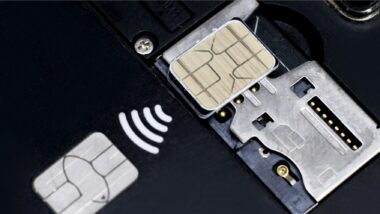Simon Judge of Mobile Phone Development asked whether mobile advertising will become the principal income driver in mobile.
The growth of mobile and the rise of Bring Your Own Device (BYOD) means more of us have smart computing devices with us most, if not all of the time.
As Simon mentions in his question, we can expect a similar explosion to the desktop web boom on mobile devices. Many companies are only just starting to realise the potential of this huge market and figure out how they can use it to their advantage. The key is to understand that advertising or any type of marketing on mobile mustn’t be seen in the same way as on the Web.
Mobile is a medium completely different from any other and should be approached and used as such in marketing and advertising strategy. The flexibility and reach of the mobile system alone means the audience and potential far outstrips desktop. It’s no surprise that a lot of different industry players are looking at managing the consumer relationship via their mobile payment scheme (whether NFC, QR codes, Square, etc…).
 When we talk about mobile advertising, we’re really talking about two-way, meaningful interactions that will engage the consumer with the brand (and if you’re not, you won’t get very far in today’s world). We’re spending more and more time on our mobile devices, which means more eyeball time for hungry advertisers, but we also want to create a personalised service.
When we talk about mobile advertising, we’re really talking about two-way, meaningful interactions that will engage the consumer with the brand (and if you’re not, you won’t get very far in today’s world). We’re spending more and more time on our mobile devices, which means more eyeball time for hungry advertisers, but we also want to create a personalised service.
Take, for example, mobile marketing solutions such as couponing: download an app, track and share your purchases and location, receive loyalty bonuses redeemable immediately via your mobile phone, then spend via NFC payment at the point-of-sale. It also enables companies (brands, retailers, banks etc.) to monetise their consumer database with attractive offers based on opt-in preferences.
Forrester recently published research suggesting that in-store proximity payments will overtake mobile web transactions in the US by 2017, which is entirely possible as adoption of NFC accelerates (for which it requires greater promotion and understanding from retailers and, consequently, customers).
The sheer volume and accessibility of mobile devices around the world gives mobile advertisers a far larger market than anything we’ve ever seen before, and so is extremely well-placed to become the predominant monetization mechanism in mobile over the next decade. But when we look at the wealth of extra possibilities of the mobile web compared to the desktop web – think smart NFC payments, coupons, high-speed data provision, in-game purchases – there are so many additional revenue streams for the industry to tap into. Examples of which we can expect to see at MWC very soon!
Keep checking in on the telecoms blog for more Q&As around #GemaltoMWC 2013. The most-read post will win a special prize so get retweeting!


